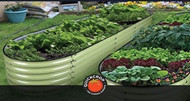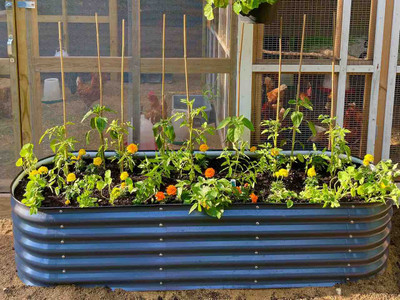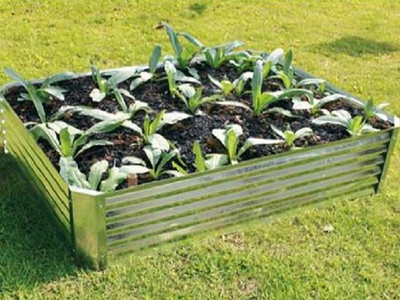Timber Raised Beds vs Metal Raised Beds: Pros and Cons

The popularity of Metal Raised Beds continues to grow, with more and more gardeners seeing them as a compact, durable and low-maintenance option for growing vegetables at an elevated height. How do they compare to Timber raised beds? There are some common similarities and some key differences.
Common Advantages of Metal Raised Beds and Timber Raised Beds
- Ideal solutions for people with limited gardening space
- Soil within the beds can be optimised, making them a good option for gardeners who have challenging outdoor soil conditions
- Elevated beds are easier to tend to for people with mobility issues or sore joints etc
- Raised beds can warm up quicker
- They can add structure and character to a garden set-up and are a visually appealing way of organising a garden layout
- The elevated nature of these beds helps with weed control, as well as keeping the soil from being walked on or compacted.
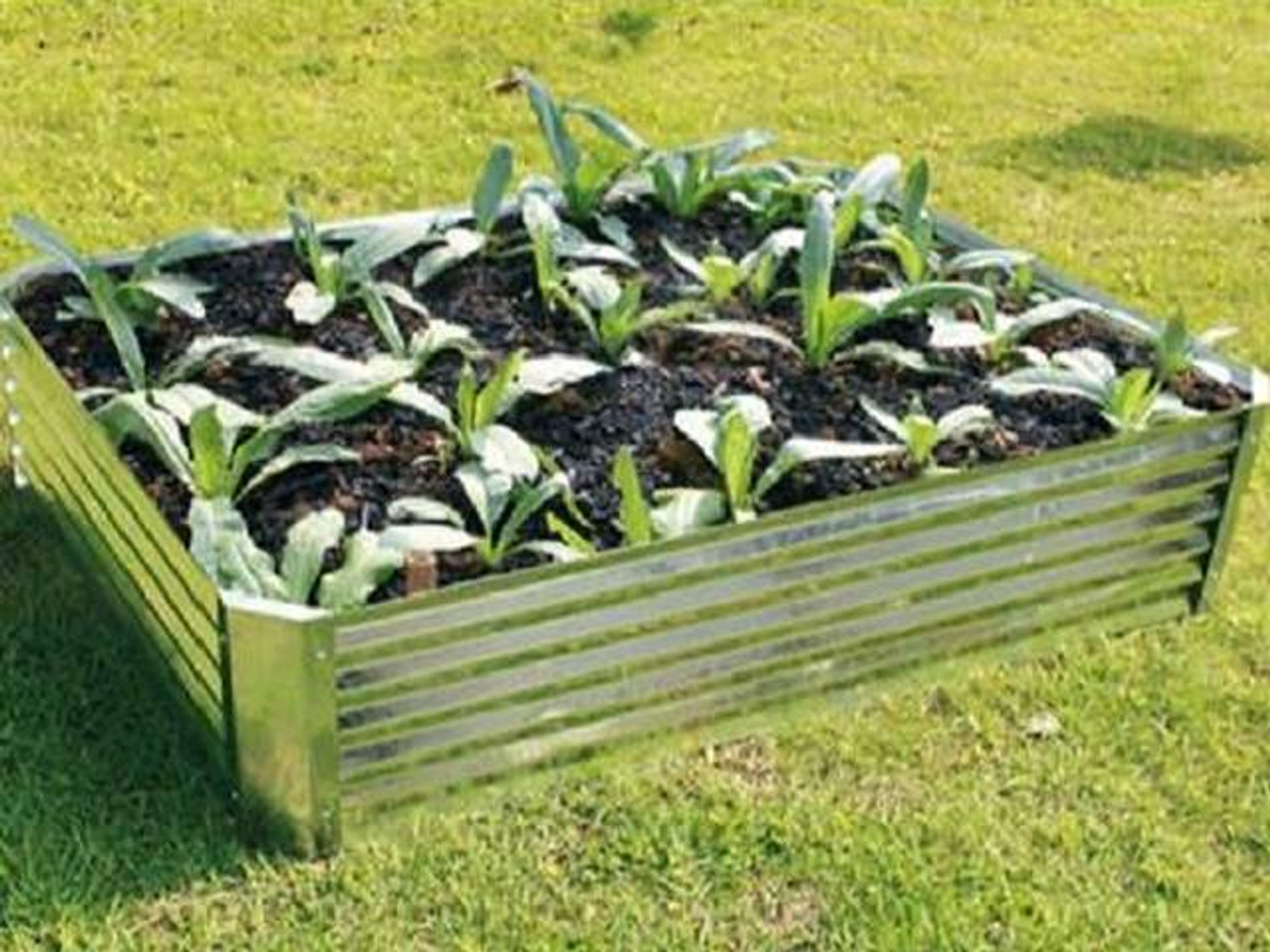
Rectangular Galvanised Raised Garden Bed
View Product Durability
The long-term durability of timber raised beds will depend on whether they are treated or untreated. Pressure-treated materials can be relied on to last for at least 10 years. If untreated the wood will start to rot and break down sooner, but you can expect to get a good 5 or 6 years.
On the other hand, cedar wood or redwood has a natural resistance to rot. Beds made with these materials will last longer; the catch, of course, is that they are more expensive.

Long-term lifespan is perhaps the number 1 quality that metal raised beds have going for them. Although not every metal raised bed out there is made the exact same way, galvanised metal is the most common and popular type. When steel is ‘galvanised’ it is basically coated with a layer of zinc, which protects the metal from rust and corrosion.
Once you have set up a metal raised bed of this type, you can fully expect it to last a good 20 years or so, even in a climate that is frequently wet or windy.
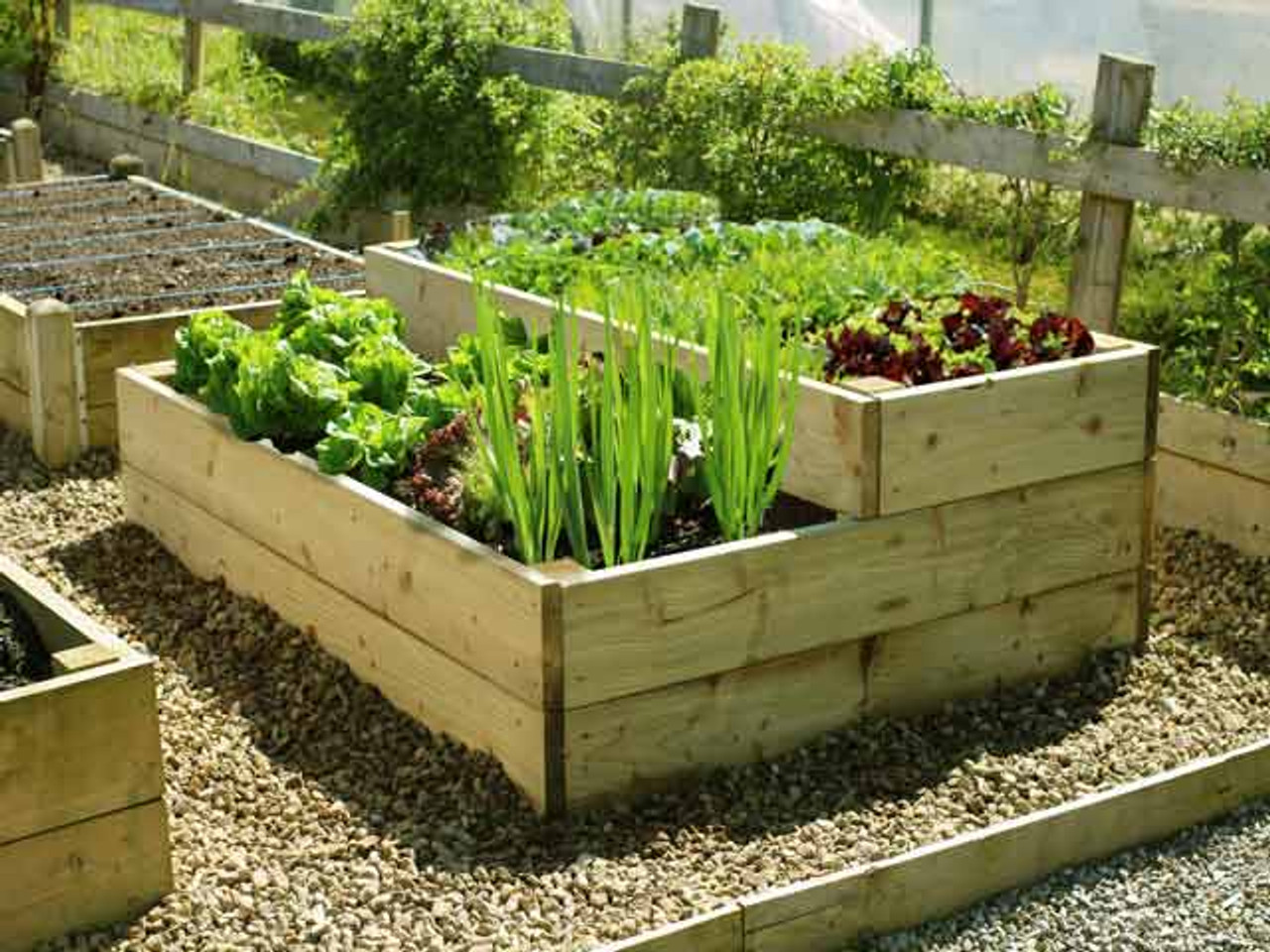
Premier Split Level Raised Vegetable Bed
View Product Aesthetics
Beauty is in the eye of the beholder, but in our view galvanised beds really don’t compare to timber ones when it comes to looks. Timber raised beds have a rustic, authentic appearance that can really complement your overall garden aesthetic. Personally I love the symmetric appearance of a row of elevated planters with different crop groupings growing in each. It’s very satisfying!
Of course, this isn’t the be all and end all. The more sleek or functional appearance of a metal raised bed may not bother you in the slightest when it’s filled with thriving, colourful crops.
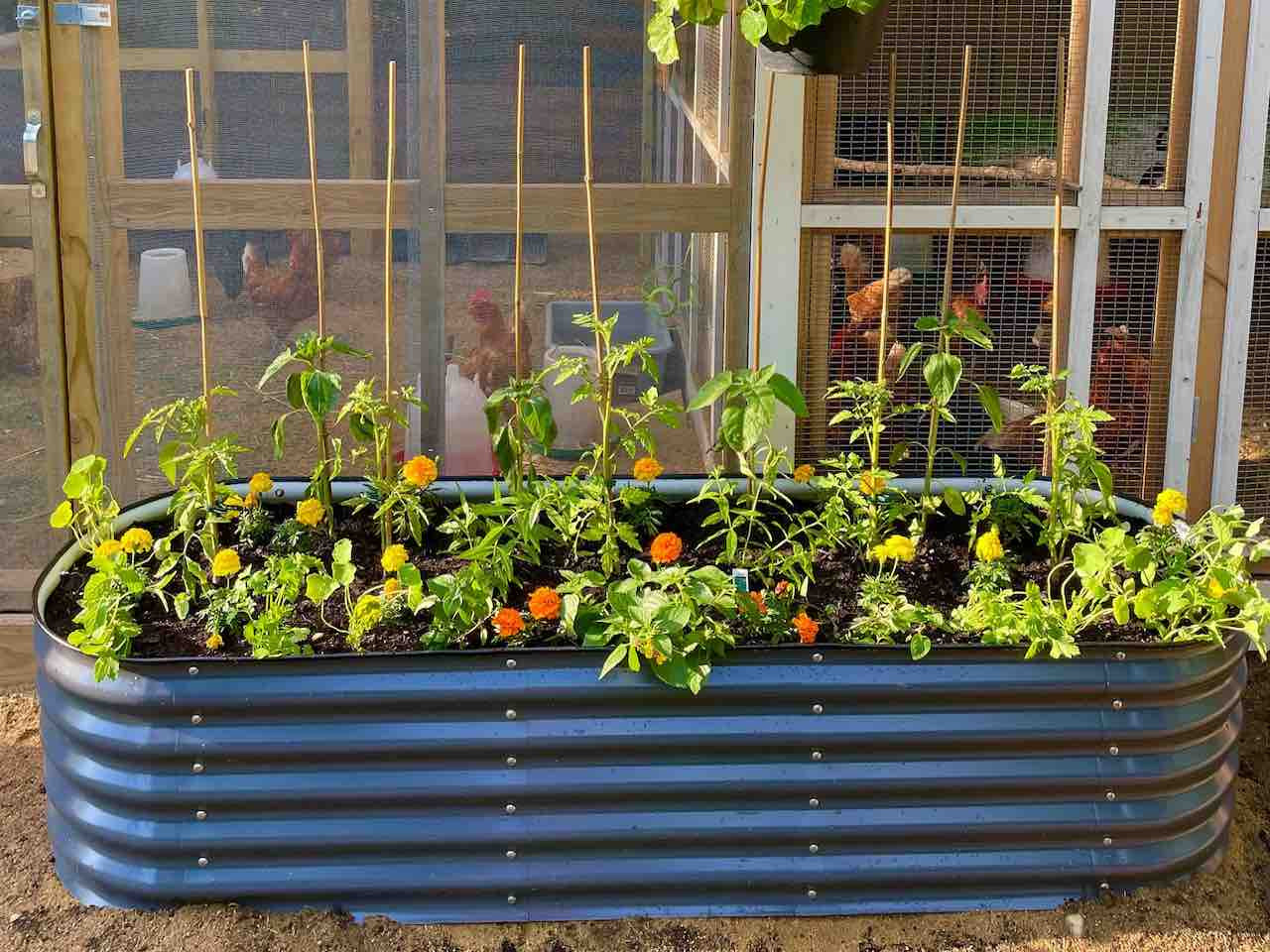
Vegtub Metal Raised Bed
View Product Versatility
Metal raised bed kits in some cases are customisable. This is because they have a modular set-up and construction where you can combine the panels in a way that gives you more length, more width or more height etc. Taller planters will suit deeper rooted crops, while a more compact setups can make for an ideal ‘herb garden’.
While timber raised bed kits come in a variety of designs, shapes and sizes, you tend to make your choice (in terms of overall L x W x H dimensions) when you are ordering or purchasing your bed. It’s also more typical to leave them be once they have been set up.

Design
Metal raised beds tend to have a more streamlined design that goes along with the metal material. You can’t really sit comfortably on the edges of a raised metal planter as you tend to your crops.
With timber raised beds there is more room for manoeuvre when it comes to the overall design. Split-level raised beds (for crops that require different depths) have a real visual flair to them, while some raised bed variations include benches or seating space for added comfort as you work.
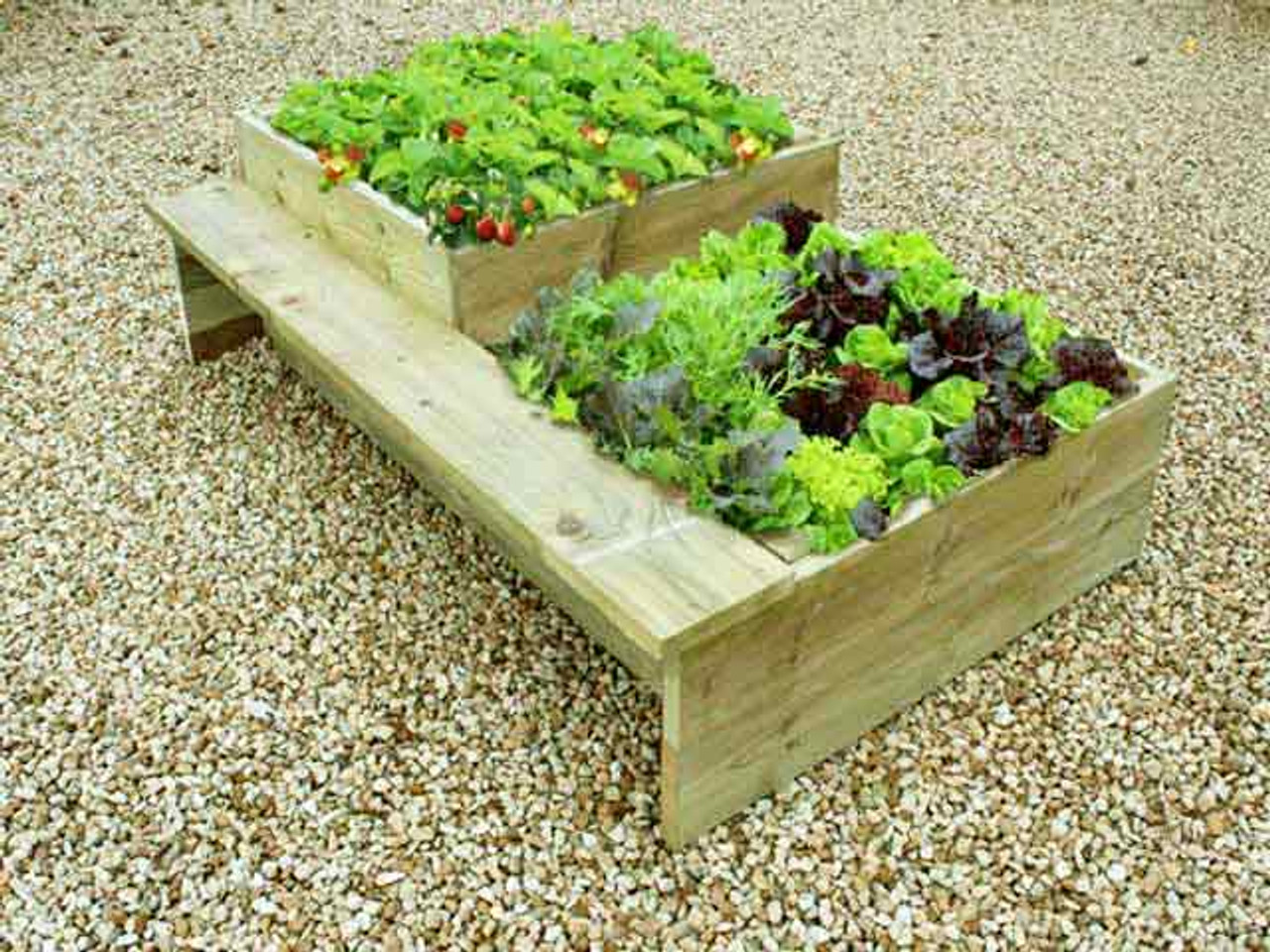
2 Tier Raised Vegetable Bed with Attached Garden Bench
View Product Temperature and Insulation
There has been some debate about the risk of overheating with metal raised beds. I can’t speak from personal experience on this point, but researching this article I have read accounts from gardeners living in exceptionally hot climates and reporting no such issues with their metal beds.
In any case the galvanised steel material that a lot of these raised beds are made with (see above) has a much lower thermal conductivity than non-galvanised steel or aluminium. The outside of your metal raised bed may feel warm to the touch on a hot day, but this should not worry you as there is not enough energy to heat the whole bed to the extent that plants or roots are at risk.

As for timber beds, wood is renowned as a natural insulator. This will help keep the soil at a relatively consistent temperature, and retain more heat at cooler times of the year. Adding raised bed covers such as mini-polytunnels can provide some measure of frost protection (or enhanced pest protection in the case of a mesh covering).
Cost
Traditionally, metal raised beds have been seen as the more expensive option. This may be less of an issue in recent years though, with a number of more affordable options on the market.

120cm Square Allotment Raised Bed Flatpack Kit - 17.5cm high
View ProductGenerally speaking, timber raised beds tend to have more overall space or soil capacity and can be built to wider or longer specifications. On the other hand, when you factor in the longer-term lifespan of metal raised beds, their relative value increases.
Maintenance
Metal raised beds require very little maintenance. Really all that you need worry about is giving the surfaces a quick clean occasionally.
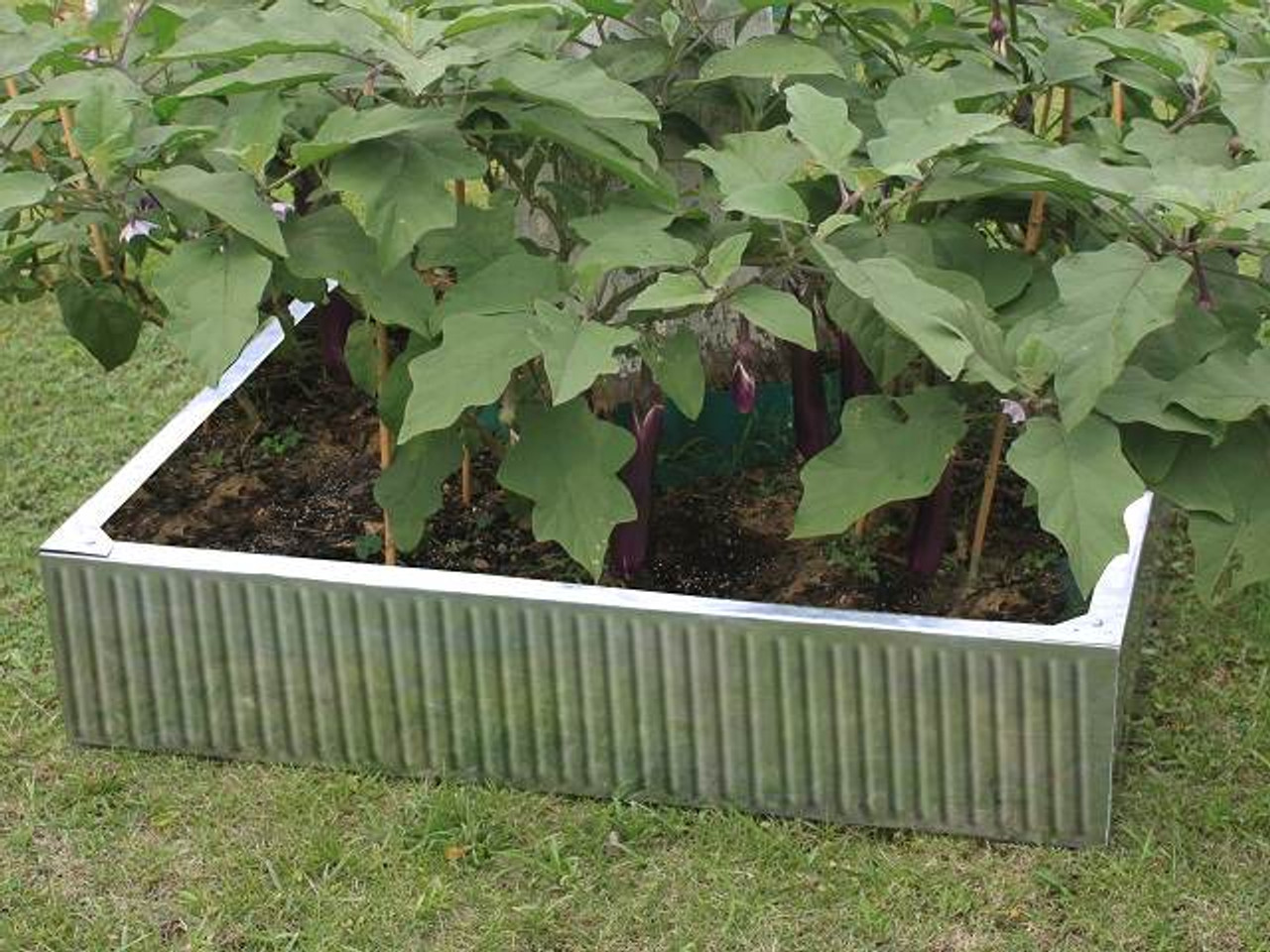
Square Galvanised Raised Garden Bed
View ProductThe amount of maintenance that a timber raised bed will increase if the timber is untreated. In this case you can use wood preservatives, stains or finishes to maintain the appearance of the wood or add weather and moisture resistance.
This amount of upkeep can sometimes be off putting when added to all the other garden tasks that need attending to. This is one of the reasons we would recommend our pressure treated raised beds: the ones I use in my garden (from our Premier range) have lasted for over 10 years with no wood maintenance or treatments. Which just leaves more time to get on with growing! The preservative used in these beds has also been certified by the soil association as safe for use with organic food crops.
